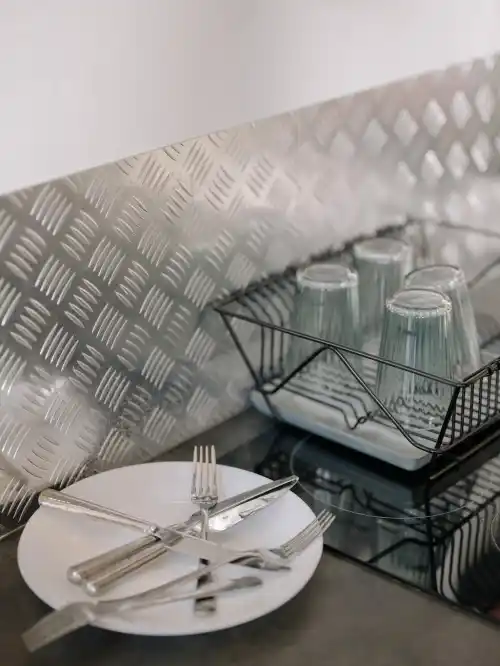
By Taylor Shackelford, Environmental Health Specialist
Wet stacking dishes refers to the act of stacking plates, bowls, and utensils immediately after washing them, without allowing them to air dry completely. This practice is often seen as a time-saving measure, as it eliminates the need to dry each item individually. However, wet stacking can lead to several issues, including the growth of bacteria, the development of unpleasant odors, and the potential for damage to the dishes themselves.
One of the primary concerns with wet stacking dishes is the increased risk of bacterial growth. When dishes are not completely dried, moisture becomes trapped between them, creating an ideal environment for bacteria to thrive. This can lead to foodborne illnesses and pose a health risk to individuals using these dishes. For example, if a wet-stacked plate is used to serve food, any bacteria present on the plate can contaminate the fresh food, potentially causing illness within the facility.
Another concern of wet stacking is the development of unpleasant odors. When dishes are stacked while still wet, the moisture can become trapped, leading to a musty or mildew-like smell. This odor can transfer to other dishes in the stack, making them unappetizing to use. Additionally, the smell can ultimately spread throughout the kitchen, creating an unpleasant environment for cooking and dining.
Wet stacking can also result in damage to the dishes themselves. When dishes are stacked while wet, they are more prone to chipping, cracking, or breaking. The moisture between the dishes can cause them to stick together, making it difficult to separate them without causing damage. Over time, this can lead to a decrease in the lifespan of the dishes, requiring more frequent replacements and additional unwanted expenses for the facility.
To put it briefly, wet stacking dishes may seem like a convenient time-saving practice, but it comes with several drawbacks that should not be overlooked. The increased risk of bacterial growth, the development of unpleasant odors, and the potential damage to the dishes themselves are all valid reasons to steer clear from wet stacking. By taking the extra time to air dry dishes thoroughly before stacking them, we can ensure a clean and hygienic kitchen environment, lengthen the lifespan of our kitchenware, and safeguard the health of ourselves and patrons.